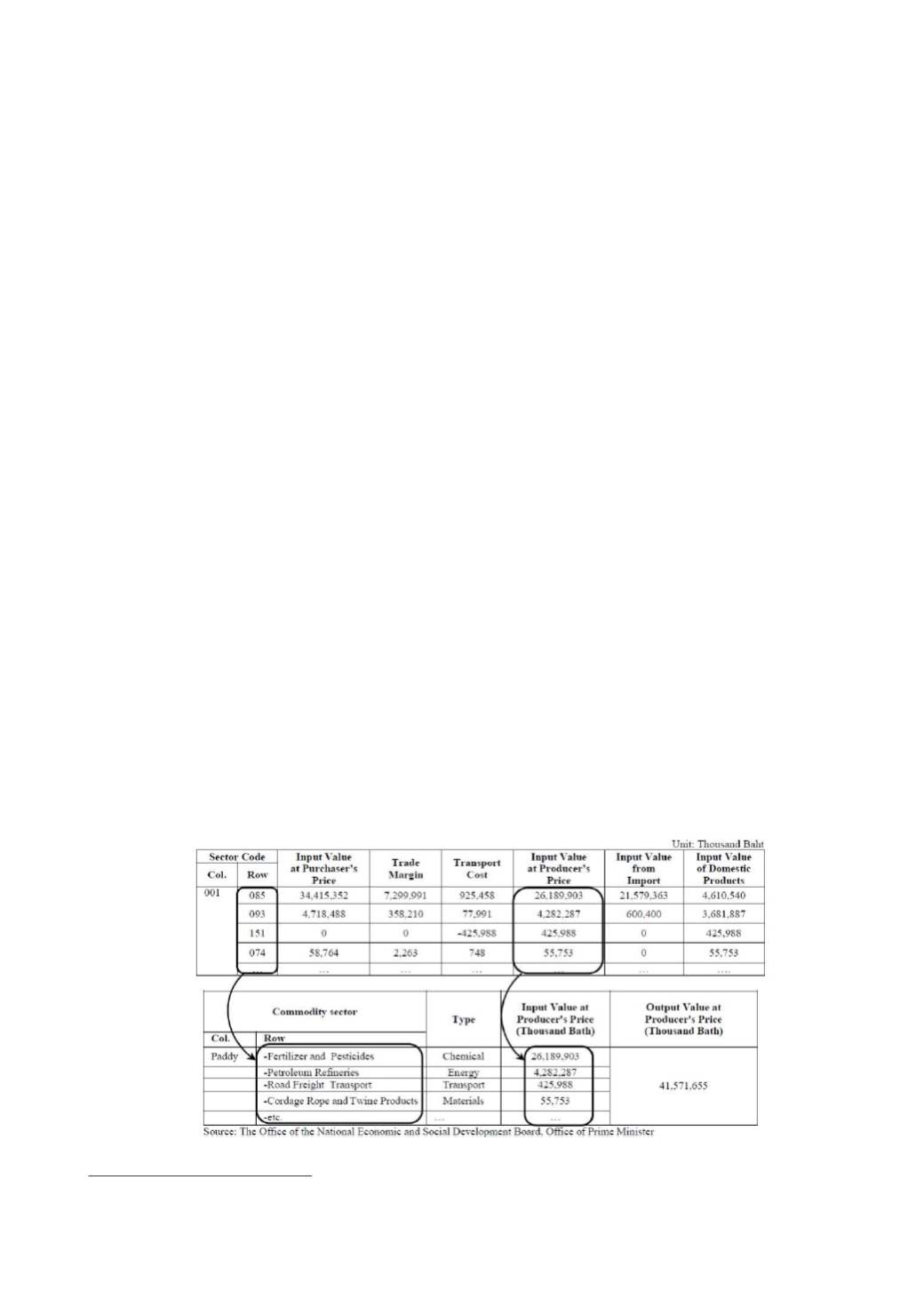
A
BSTRACT
Thailand is one of the countries of which an economy
relies on an export of the diversified commodities.
Although, the main contribution of income has been
shifted from the agricultural sector to the industrial and
service sectors in the past few decades, Thailand is still
considered to be one of the major exporter of agricultural
and food products. Thus, a lot of agricultural products are
produced not only for internal trading but also for
exporting. For either purpose, a lot of fossil fuels are
consumed and abundant amount of greenhouse gases are
emitted. In this research, the energy consumption and the
greenhouse gas emission during the cradle-to-gate life
cycle of the agricultural sector are quantified based on the
Input/Output technique together with the method and
emission factors recommended in 2006 IPCC guidelines
for national greenhouse gas inventories. The results
indicate that, the average energy consumption and
greenhouse gas emission of 28 agricultural sectors
presented in term of energy intensity and greenhouse gas
intensity are approximately 9.06E-05
toe per baht of the
output and 0.0143 kgCO
2-eq
/baht of the output,
respectively. Among considered sectors, the ocean and
coastal fishing sector has the highest energy intensity and
the highest greenhouse gas emission intensity at 3.17E-05
toe/baht and 0.1077 kgCO
2-eq
/baht.
Keywords: Agrucultural Products, Greenhouse Gas
Emission, I-O Table, Life Cycle Inventory.
Corresponding Author:
I
NTRODUCTION
Currently, energy becomes an important aspect for a
production sector in producing commodities which
responding to increasing needs and propelling the
country’s economy. In the meantime, the effect from
consuming the energy is environmental pollution. In B.E.
2538-2548, Thailand economic sector tended to utilize
32.39% higher intensity of energy in the production
sector and 5.39% per year of Carbon Dioxide emission
[9]. Besides, it is discovered that Carbon Dioxide
emission from energy combustion in agricultural sector is
9,865,620 tons [17]. According to the above situation, it
has extremely effect on the Thailand’s agricultural
commodities and products in exporting market regarding
the Non-Tariff Barriers: NTBs of the major and new trade
partners which pay attention to environmental issue and
consumer protection. In order to enhance the
commodities’ standard to meet the international
acceptance and increase the capability in the world
market competition, Thailand has developed their
products’ quality by creating the environmental labeling.
The products which this label are being guaranteed
that they pass the environmental effect assessment, the
theory of Life Cycle Assessment (LCA) by doing the
assessment through the Life Cycle Inventory Assessment
(LCI) listing method.
Assessment of GHGs Emission from Life Cycle Energy
Consumption in Agricultural Sector Based on I/O Table
P. Bouasan, and N. Vorayos
*
Department of Mechanical Engineering, Faculty of Engineering,Chiang Mai University,
239 Huay Kaew Rd., Muang Chiang Mai 50200
(
Thailad
)
Fig. 1. The production factor of the raw material, energy and chemical
in paddy sector
.
2013 International Conference on Alternative Energy in Developing Countries and Emerging Economies
- 534 -


